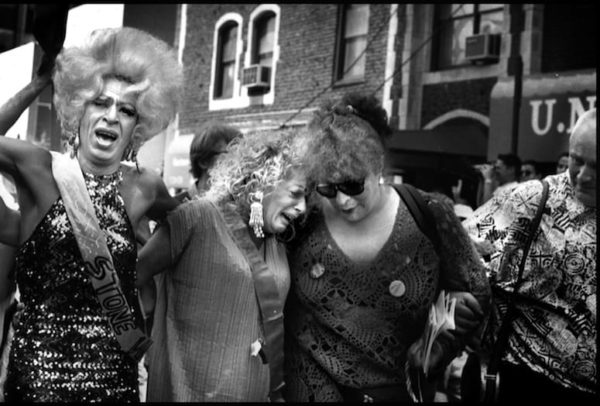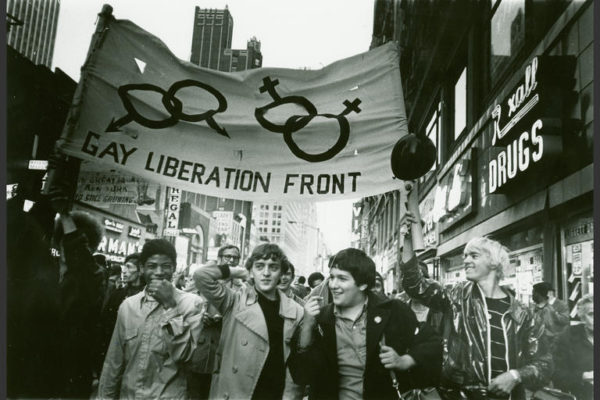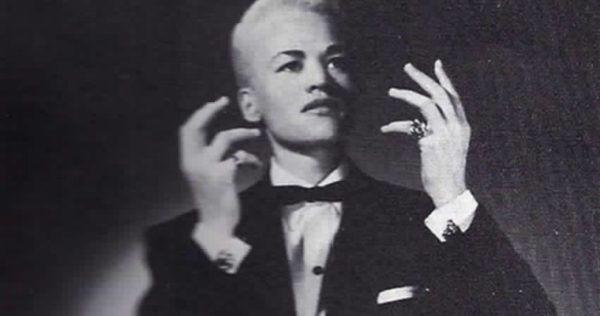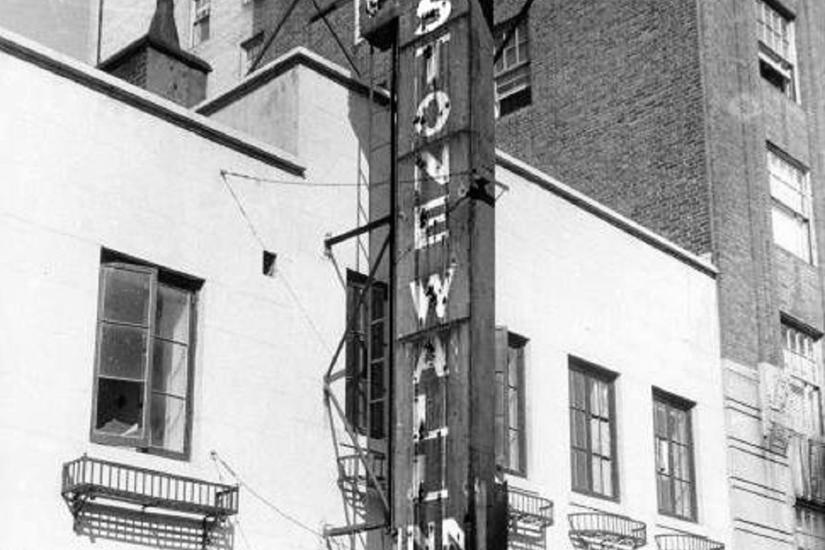Summer of ’69, Part I: The Stonewall Riots
The summer of 1969 was long, hot and volatile, still reverberating with the cosmic gong that was the Uranus/Pluto conjunction of four years previously. In this fiftieth anniversary summer, AAA will be taking a look back at some of the blockbuster events from that period, some of which were obviously momentous at the time, like the Moon Landing, and others which initially seemed to be predominantly personal tragedies, like the drowning death of Mary Jo Kopechne or the Manson Family murders, but which have reverberated for decades.
The summer had barely begun when one of its most consequential events occurred, involving some of what society viewed as its least consequential members. In the wee hours of June 28th, 1969, a group of fed-to-the-teeth drag queens challenged a police raid on a gay bar in New York’s Greenwich Village neighborhood, essentially inaugurating what became the Gay Rights movement.
Police raids of the Stonewall Inn were fairly routine, occurring roughly monthly. A gay bar which catered to some of the poorest and most marginalized people in the LGBT community – drag queens, transgender people, effeminate young men, butch lesbians, male prostitutes, and homeless youth – the Mafia-owned establishment was typically given advance notice of police raids so patrons could duck out early, but no such warning was offered on the night of June 27th. By midnight and the turn of the calendar page, Stonewall management thought they were safe for the evening, as raids typically occurred much earlier.
But at 1:20 AM, eight police officers, headed by Detective Charles Smythe and Deputy Inspector Seymour Pine, pounded on the doors, announcing, “Police! We’re taking the place!” Well, that’s what they thought! But something was different about that night. Was it the passing and funeral days earlier of gay icon Judy Garland, as some allege? Or the pent-up frustrations of ritual police harassment?
The raid did not go as planned, to put it mildly. Standard procedure for these events was to line up the patrons, check their ID, then female police officers would take customers dressed as women to the bathroom to verify their sex. Any men dressed as women were arrested. But that night the drag queens refused to go with the officers; men in line refused to produce their identification. Faced with this passive resistance, police decided to take everyone on the premises to the police station. Since no advance notice had been given, more than 200 people remained in the bar when it was raided, a much larger number than police previously had to deal with.
Within minutes a crowd had gathered outside, drawn by the hullabaloo and the presence of police wagons. Taunting officers with jeers for them and cheers for the persecuted drag queens, the onlookers became increasingly aggressive; police officers lost control of the situation, and hurled insults quickly became hurled projectiles, like garbage cans, bottles, and bricks from a nearby construction site. The gawking crowd had become an enraged mob, and police barricaded themselves inside the Stonewall for protection, calling on the NYPD’s Tactical Patrol Force for support.
By 4 AM the crowd had been dispersed, but the tensions between New York City police and gay residents of Greenwich Village which had been building for years erupted into more protests the next evening, and again several nights later. The Gay Rights movement had been born, with the Gay Liberation Front activist organization forming within days of the riots. Even straight locals supported the cause, and within weeks, Village residents quickly organized into activist groups to concentrate efforts on establishing places for gays and lesbians to be open about their sexual orientation without fear of being harassed and arrested.

Police were unprepared for the staunch resistance they met from sissies, fags and dykes when they raided the popular gay bar that hot June night in 1969
A chart cast for 1:20 AM EDT on 28 June 1969 for Greenwich Village, Manhattan, New York, shows just what you’d expect from the circumstances in effect at the time. TNO Eris, representing marginalized, disrespected and irate populations, is rising at 12 Aries on the 20 Aries Ascendant, while asteroid Greenwich at 27 Libra on the Descendant identifies just where those populations were.
The Sun at 6 Cancer conjoins asteroid Dionysos at 0 Cancer (named for the crossdressing, gender-fluid Greek god, also associated with excessive alcohol consumption), and is in a Grand Cross with rebellious, riot-inclined Uranus at 0 Libra, gay-themed asteroid Sappho (named for ancient Greek poet Sappho of Lesbos, who extolled the virtues of same-sex love and gave her name to lesbianism) at 3 Aries, and asteroid Drago (for those tough-as-nails Drag Queens) at 10 Capricorn, on the 11 Cap MC. Transvestites were certainly the focus of all eyes in the moment, as that Midheaven locale implies, fighting back after decades of oppression and police brutality.

Drag Queens stiffen their limp wrists in the aftermath of the riots; at one point, they formed a Rockettes-style kick line to taunt police
Venus at 20 Taurus opposed Neptune at 26 Scorpio, as those “fake (Neptune) women (Venus)”, just out for a night’s entertainment (Venus also), took a stand in that Manhattan neighborhood, with asteroid Manhattan at 19 Leo in T-Square. But more amazingly, asteroid Stone, for the Stonewall, is exactly conjunct Venus, with asteroids Antinous (another gay marker, named for the Emperor Hadrian’s lover, who sacrificed himself in the Nile to save his beloved, and was later deified) at 19 Taurus and Polizzi (for “police”, based in Italian “polizia” and German “polizei”) at 22.
Asteroid Queen’s at 28 Pisces opposes Jupiter at 27 Virgo, arbiter of justice and enforcer of rights, inflating the situation; with the T-Square to the Galactic Center at 26 Sagittarius, it was time for those queens to make themselves noticed by the world. Asteroid Copland at 29 Virgo ties to this pattern, also indicating the police presence. The conflict between the two groups is further portrayed by a square from Saturn, representing official authority in the form of the police, at 6 Taurus, to asteroid Ganymed, another gay referent (named for Zeus’ underage cupbearer and boytoy lover – many of the participants were young street hustlers) at 10 Leo, aside asteroids Wallin (for the Stonewall), Nemesis (self-undoing) and Icarus (rash, reckless actions) at 8, 3 and 1 Leo respectively. The specific officers involved are represented by asteroids Smith (for Detective Charles Smythe) at 9 Capricorn on the MC, with Drago opposing the Sun; and Pina (for Deputy Inspector Seymour Pine) at 3 Taurus, conjoined Saturn.

Within days of the riots, the first national gay rights organization had formed, the Gay Liberation Front
Much of the details of that night are hazy and conflicting, lost in the kerfuffle and the fog of war, but one butch lesbian seems to have precipitated the resistance, when she enjoined the crowd to defend her after a brutalizing policeman struck her head with his baton for complaining that her handcuffs were too tight. It was as he threw her bodily into the police wagon that the crowd erupted. That bull-dyke is sometimes identified as Storme DeLarverie, termed “the Rosa Parks of the gay community”, later a prominent activist. There is celestial support for Storme being in fact the provocateur of record, with asteroid Storm at 29 Aquarius, squaring Venus/Stone, trine asteroid Greenwich, and inconjunct both Jupiter/Copland and Icarus, creating a Yod, or Finger of Destiny. Storm is also stationary, at its retrograde degree (it would turn a week later), an embedded factor exuding extraordinary prominence over the period in question.

Storme Delarverie, sometimes known as the Rosa Parks of the gay rights movement, has been credited as the lesbian who lit the spark on the Stonewall Riots
As we commemorate the fiftieth anniversary of this watershed event for the LGBT community, Chiron, the archetype of the wounded healer, the maverick who dances to the beat of a different drummer, the outcast, is just minutes from making its first Return in the Stonewall Riots chart. Its wheel has come full circle, and it’s time to assess the progress that has been made. Gays and lesbians, while they still face prejudice and societal disapproval from some quarters, have become fully integrated and participating citizens, with the rights of marriage, adoption and many legal protections.
LGBT individuals are out and proud, with a strong presence in pop culture and society, including openly gay newscasters, pro sports figures, US Representatives, and drag queen competitions. The 2020 presidential race has even seen the first openly gay, married, candidate (and in some recent polls, he’s coming in third!). It’s not a perfect world, to be sure, and countervailing forces are always striving to roll back those advances, but gay youth today faces a much brighter prospect for genuine self-expression than their great-aunt dykes and great-uncle queens.


